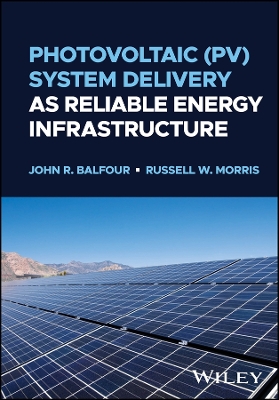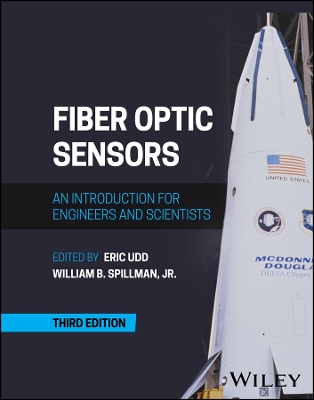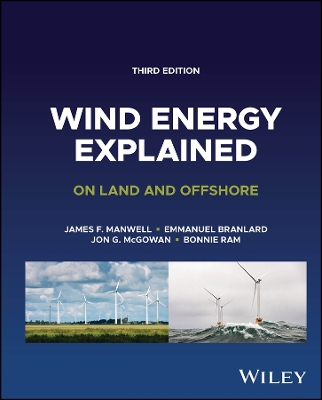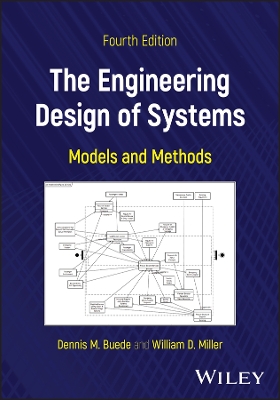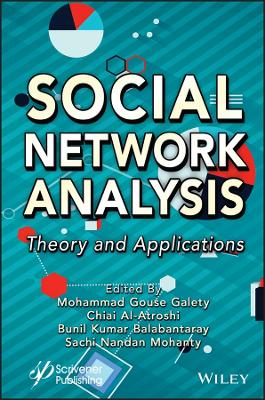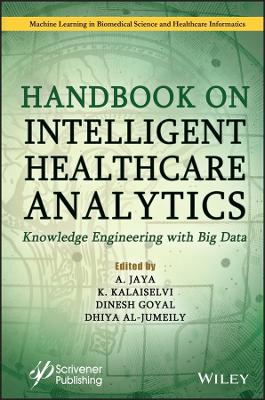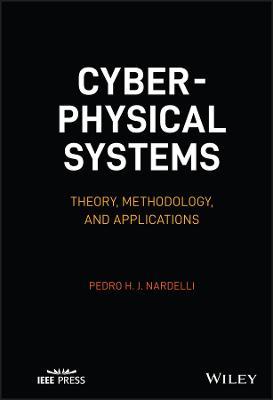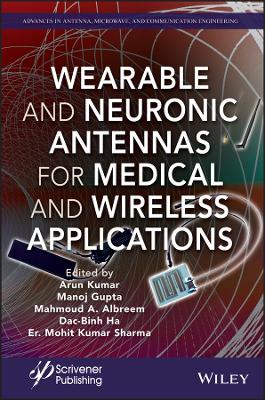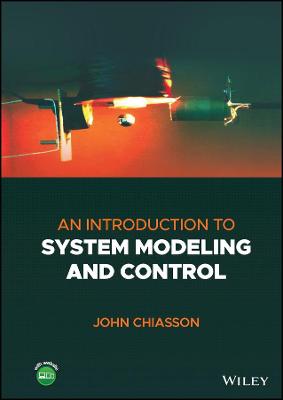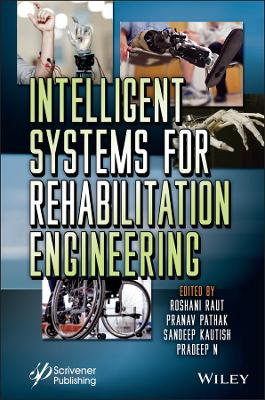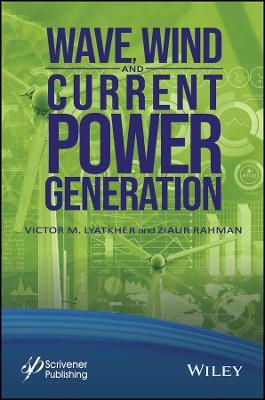Radio Science Techniques for Deep Space Exploration
 -15%
portes grátis
-15%
portes grátis
Radio Science Techniques for Deep Space Exploration
Asmar, Sami W.
John Wiley & Sons Inc
04/2022
352
Dura
Inglês
9781119734147
15 a 20 dias
784
Preface xiii
Acknowledgments xv
Author and Contributors xvii
1 Investigations and Techniques 1
1.0 Introduction 1
1.1 Historical Background 2
1.1.1 The Field of Radio Science 3
1.2 Fundamental Concepts 5
1.2.1 Categories of RS Investigations 10
1.2.2 Related Fields 12
1.3 Historical Development 14
1.4 Overview of the Radio Science Instrumentation System 18
1.4.1 Flight System 23
1.4.2 Ground System 24
1.4.3 Other Ground Stations 26
1.5 Noise, Error Sources, and Calibrations 26
1.6 Experiment Implementation, Data Archiving, and Critical Mission Support 29
1.7 Radio Science at Home 30
1.8 Future Directions 32
1.9 Summary and Remaining Chapters 32
Appendix 1A Selected Accomplishments and Planned Observations in Spacecraft Radio Science 35
1A.1 Selected Accomplishments in Radio Science 35
1A.2 Planned Observations in the Near-Term 36
1A.3 Planned Observations in the Long Term 37
2 Planetary Atmospheres, Rings, and Surfaces 39
2.1 Overview of Radio Occultations 39
2.2 Neutral Atmospheres 45
2.2.1 Abel Inversion 48
2.3 Ionospheres 52
2.4 Rings 53
2.4.1 Ring Occultation Observables 55
2.4.2 Ring Occultation Analysis 56
2.4.3 Ring Diffraction Correction 60
2.4.4 Data Decimation and Profile Resolution 61
2.4.5 Signal-to-noise Ratio-resolution Tradeoff 61
2.5 Surface Scattering 64
3 Gravity Science and Planetary Interiors 69
3.1 Overview 69
3.2 Gravity Observables and Formulations 74
3.2.1 Alternative Basis and Methods 75
3.2.2 Tidal Forces and Time Variable Gravity 76
3.2.3 Covariance Analysis 81
3.3 Earth and Moon Gravity Measurements and the Development of Crosslinks 83
3.4 Shape and Topography Data for Interpretation of Gravity Measurements 87
3.4.1 Imagery 92
3.4.2 Altimetry 93
3.4.3 Space-based Radar 94
3.4.4 Radio Occultations 94
3.4.5 Ground-based Radar 94
3.4.6 Examples of Results of Gravity-Topography Analysis 94
3.5 Application to Solar System Bodies 95
3.5.1 Moon 96
3.5.2 Mercury 96
3.5.3 Venus 97
3.5.4 Mars 97
3.5.5 Jupiter 99
3.5.6 Saturn 102
3.5.7 Uranus 103
3.5.8 Neptune 104
3.5.9 Pluto 104
3.5.10 Asteroids and Comets 104
3.5.11 Pioneer and Earth Flyby Anomalies 105
3.6 A User's Guide 106
3.6.1 Calculation of Observables and Partials 108
3.6.2 Estimation Filter 109
3.6.3 Solution Analysis 109
Appendix 3A Planetary Geodesy 111
3A.1 Planetary Geodesy: Gravitational Potentials and Fields 111
3A.2 Gravity Determination Technique 114
3A.3 Dynamical Integration 114
3A.4 Processing of Observations 116
3A.5 Filtering of Observations 117
4 Solar and Fundamental Physics 123
4.1 Principles of Heliospheric Observations 123
4.2 Inner Heliospheric Electron Density 126
4.3 Density Power Spectrum 127
4.4 Intermittency, Nonstationarity, and Events 127
4.5 Faraday Rotation 128
4.6 Spaced-receiver Measurements 128
4.7 Space-time Localization of Plasma Irregularities 129
4.8 Utility for Telecommunications Engineering 130
4.9 Precision Tests of Relativistic Gravity 131
4.10 Scientific Goals and Objectives 133
4.10.1 Determine ? to an Accuracy of 2 x 10?6 134
4.10.2 Determine ? to an Accuracy of ~3 x 10?5 135
4.10.3 Determine ? to an Accuracy of at Least 4.4 x 10?4 135
4.10.4 Determine ?1 to an Accuracy of 7.8 x 10?6 135
4.10.5 Determine the Solar Oblateness to an Accuracy of 4.8 x 10?9 135
4.10.6 Test Any Time Variation of the Gravitational Constant, G, to an Accuracy of 3 x 10?13 Per Year 135
4.10.7 Characterize the Solar Corona 136
4.11 Comparison with Other Experiments 136
4.11.1 Cassini 136
4.11.2 Gravity Probe B 137
4.11.3 Messenger 137
4.11.4 Lunar Laser Ranging 137
4.11.5 Gaia 137
4.12 MORE Summary 138
4.13 Anomalous Motion of Pioneers 10 and 11 138
Appendix 4A Solar Corona Observation Methodology Illustrated by Mars Express 139
4A.1 Formulation 139
4A.2 Total Electron Content from Ranging Data 141
4A.3 Change in Total Electron Content from Doppler Data 143
4A.4 Electron Density 144
4A.5 Coronal Mass Ejections 145
4A.6 Separation of Uplink and Downlink Effects from Plasma 150
4A.7 Earth Atmospheric Correction 152
4A.8 Example Data 153
Appendix 4B Faraday Rotation Methodology Illustrated by Magellan Observations 157
4B.1 Formulation 157
4B.2 Coronal Radio Sounding 158
4B.3 The Faraday Rotation Effect 160
4B.4 Measurement of the Total Electron Content 161
4B.5 Combining the Faraday Rotation and Total Electron Content 162
4B.6 Instrument Overview: The Magellan Spacecraft 164
4B.7 Instrument Overview: The Deep Space Network 165
4B.8 Data Processing and Results 166
4B.9 Conclusion 167
Appendix 4C Precision Doppler Tracking of Deep Space Probes and the Search for Low-frequency Gravitational Radiation 171
4C.1 Background 171
4C.2 Response of Spacecraft Doppler Tracking to Gravitational Waves 172
4C.3 Noise in Doppler GW Observations and Their Transfer Functions 174
4C.4 Detector Performance 176
4C.4.1 Periodic and Quasi-periodic Waves 176
4C.4.2 Burst Waves 177
4C.4.3 Stochastic Waves 178
4C.5 Sensitivity Improvements in Future Doppler GW Observations 179
5 Technologies, Instrumentation, and Operations 181
5.1 Overview 181
5.1.1 End-to-End Instrumentation Overview 182
5.1.2 Experiment Error Budgets 187
5.2 Key Concepts and Terminology 191
5.2.1 The Allan Deviation for Frequency and Timing Standards 191
5.2.2 Signal Operational Modes 197
5.2.3 Reception Modes 200
5.2.4 Signal Carrier Modulation Modes 202
5.3 Radio Science Technologies 203
5.3.1 Spacecraft Ultrastable Oscillator 204
5.3.2 Spacecraft Ka-band Translator 213
5.3.3 Spacecraft Open-loop Receiver 215
5.3.4 Spacecraft Radio Science Beacon 215
5.3.5 Ground Water Vapor Radiometer 215
5.3.6 Ground Advanced Ranging Instrument 215
5.3.7 Ground Bethe Hole Coupler 216
5.3.8 Ground Advanced Pointing Techniques 217
5.4 Operations and Experiment Planning 217
5.5 Data Products 218
5.5.1 Range Rate 219
5.5.2 Range 220
5.5.3 Delta Differential One-way Ranging (Delta-DOR) 222
5.5.4 Differenced Range Versus Integrated Doppler 222
5.5.5 Open-loop Receiver (Radio Science Receiver) 223
5.5.6 Media Calibration 224
5.5.7 Spacecraft Trajectory 225
5.5.8 Calibration Data Sets 225
Appendix 5A Spacecraft Telecommunications System and Radio Science Flight Instrument for Several Deep Space Missions 227
6 Future Directions in Radio Science Investigations and Technologies 231
6.1 Fundamental Questions toward a Future Exploration Roadmap 231
6.1.1 Fundamental Questions about the Utility of RS Techniques 232
6.1.2 Possible Triggers for Specific Innovations for Future Investigations 233
6.1.3 Possible Synergies with Other Fields 233
6.1.4 Examining Relevant Methodologies 234
6.2 Science-Enabling Technologies: Constellations of Small Spacecraft 235
6.2.1 Constellations for Investigations of Atmospheric Structure and Dynamics 236
6.2.2 Constellations for Investigations of Interior Structure and Dynamics 238
6.2.3 Constellations for Simultaneous and Differential Measurements 239
6.2.4 Constellations of Entry Probes and Atmospheric Vehicles 240
6.2.5 Constellations for Investigations of Planetary Surface 241
6.3 Science-enabling via Optical Links 243
6.4 Science-enabling Calibration Techniques 243
6.4.1 Earth's Troposphere Water Vapor Radiometry 244
6.4.2 Antenna Mechanical Noise 244
6.4.3 Advanced Ranging 245
6.5 Summary 246
Appendix 6A The National Academies Planetary Science Decadal Survey, Radio Science Contribution, 2009: Planetary Radio Science: Investigations of Interiors, Surfaces, Atmospheres, Rings, and Environments 247
6A.1 Summary 248
6A.2 Background 248
6A.3 Historical Opportunities and Discoveries 249
6A.4 Recent Opportunities and Discoveries 249
6A.5 Future Opportunities 250
6A.6 Technological Advances in Flight Instrumentation 252
6A.7 The Future of Flight Instrumentation 253
6A.7.1 Crosslink Radio Science 253
6A.7.2 Ka-band Transponders and Other Instrumentation 254
6A.8 Ground Instrumentation 254
6A.8.1 NASA's Deep Space Network 254
6A.8.2 Other Facilities 254
6A.9 New Communications Architectures: Arrays and Optical Links 255
6A.10 Conclusion and Goals 255
Appendix 6B The National Academies Planetary Science Decadal Survey, Radio Science Contribution: Solar System Interiors, Atmospheres, and Surfaces Investigations via Radio Links: Goals for the Next Decade 257
6B.1 Summary 258
6B.2 Current Status of RS Investigations 259
6B.3 Key Science Goals for the Next Decade 260
6B.4 Radio Science Techniques for Achieving the Science Goals of the Next Decade 262
6B.5 Technology Development Needed in the Next Decade 263
References 267
Acronyms and Abbreviations 311
Index 331
Preface xiii
Acknowledgments xv
Author and Contributors xvii
1 Investigations and Techniques 1
1.0 Introduction 1
1.1 Historical Background 2
1.1.1 The Field of Radio Science 3
1.2 Fundamental Concepts 5
1.2.1 Categories of RS Investigations 10
1.2.2 Related Fields 12
1.3 Historical Development 14
1.4 Overview of the Radio Science Instrumentation System 18
1.4.1 Flight System 23
1.4.2 Ground System 24
1.4.3 Other Ground Stations 26
1.5 Noise, Error Sources, and Calibrations 26
1.6 Experiment Implementation, Data Archiving, and Critical Mission Support 29
1.7 Radio Science at Home 30
1.8 Future Directions 32
1.9 Summary and Remaining Chapters 32
Appendix 1A Selected Accomplishments and Planned Observations in Spacecraft Radio Science 35
1A.1 Selected Accomplishments in Radio Science 35
1A.2 Planned Observations in the Near-Term 36
1A.3 Planned Observations in the Long Term 37
2 Planetary Atmospheres, Rings, and Surfaces 39
2.1 Overview of Radio Occultations 39
2.2 Neutral Atmospheres 45
2.2.1 Abel Inversion 48
2.3 Ionospheres 52
2.4 Rings 53
2.4.1 Ring Occultation Observables 55
2.4.2 Ring Occultation Analysis 56
2.4.3 Ring Diffraction Correction 60
2.4.4 Data Decimation and Profile Resolution 61
2.4.5 Signal-to-noise Ratio-resolution Tradeoff 61
2.5 Surface Scattering 64
3 Gravity Science and Planetary Interiors 69
3.1 Overview 69
3.2 Gravity Observables and Formulations 74
3.2.1 Alternative Basis and Methods 75
3.2.2 Tidal Forces and Time Variable Gravity 76
3.2.3 Covariance Analysis 81
3.3 Earth and Moon Gravity Measurements and the Development of Crosslinks 83
3.4 Shape and Topography Data for Interpretation of Gravity Measurements 87
3.4.1 Imagery 92
3.4.2 Altimetry 93
3.4.3 Space-based Radar 94
3.4.4 Radio Occultations 94
3.4.5 Ground-based Radar 94
3.4.6 Examples of Results of Gravity-Topography Analysis 94
3.5 Application to Solar System Bodies 95
3.5.1 Moon 96
3.5.2 Mercury 96
3.5.3 Venus 97
3.5.4 Mars 97
3.5.5 Jupiter 99
3.5.6 Saturn 102
3.5.7 Uranus 103
3.5.8 Neptune 104
3.5.9 Pluto 104
3.5.10 Asteroids and Comets 104
3.5.11 Pioneer and Earth Flyby Anomalies 105
3.6 A User's Guide 106
3.6.1 Calculation of Observables and Partials 108
3.6.2 Estimation Filter 109
3.6.3 Solution Analysis 109
Appendix 3A Planetary Geodesy 111
3A.1 Planetary Geodesy: Gravitational Potentials and Fields 111
3A.2 Gravity Determination Technique 114
3A.3 Dynamical Integration 114
3A.4 Processing of Observations 116
3A.5 Filtering of Observations 117
4 Solar and Fundamental Physics 123
4.1 Principles of Heliospheric Observations 123
4.2 Inner Heliospheric Electron Density 126
4.3 Density Power Spectrum 127
4.4 Intermittency, Nonstationarity, and Events 127
4.5 Faraday Rotation 128
4.6 Spaced-receiver Measurements 128
4.7 Space-time Localization of Plasma Irregularities 129
4.8 Utility for Telecommunications Engineering 130
4.9 Precision Tests of Relativistic Gravity 131
4.10 Scientific Goals and Objectives 133
4.10.1 Determine ? to an Accuracy of 2 x 10?6 134
4.10.2 Determine ? to an Accuracy of ~3 x 10?5 135
4.10.3 Determine ? to an Accuracy of at Least 4.4 x 10?4 135
4.10.4 Determine ?1 to an Accuracy of 7.8 x 10?6 135
4.10.5 Determine the Solar Oblateness to an Accuracy of 4.8 x 10?9 135
4.10.6 Test Any Time Variation of the Gravitational Constant, G, to an Accuracy of 3 x 10?13 Per Year 135
4.10.7 Characterize the Solar Corona 136
4.11 Comparison with Other Experiments 136
4.11.1 Cassini 136
4.11.2 Gravity Probe B 137
4.11.3 Messenger 137
4.11.4 Lunar Laser Ranging 137
4.11.5 Gaia 137
4.12 MORE Summary 138
4.13 Anomalous Motion of Pioneers 10 and 11 138
Appendix 4A Solar Corona Observation Methodology Illustrated by Mars Express 139
4A.1 Formulation 139
4A.2 Total Electron Content from Ranging Data 141
4A.3 Change in Total Electron Content from Doppler Data 143
4A.4 Electron Density 144
4A.5 Coronal Mass Ejections 145
4A.6 Separation of Uplink and Downlink Effects from Plasma 150
4A.7 Earth Atmospheric Correction 152
4A.8 Example Data 153
Appendix 4B Faraday Rotation Methodology Illustrated by Magellan Observations 157
4B.1 Formulation 157
4B.2 Coronal Radio Sounding 158
4B.3 The Faraday Rotation Effect 160
4B.4 Measurement of the Total Electron Content 161
4B.5 Combining the Faraday Rotation and Total Electron Content 162
4B.6 Instrument Overview: The Magellan Spacecraft 164
4B.7 Instrument Overview: The Deep Space Network 165
4B.8 Data Processing and Results 166
4B.9 Conclusion 167
Appendix 4C Precision Doppler Tracking of Deep Space Probes and the Search for Low-frequency Gravitational Radiation 171
4C.1 Background 171
4C.2 Response of Spacecraft Doppler Tracking to Gravitational Waves 172
4C.3 Noise in Doppler GW Observations and Their Transfer Functions 174
4C.4 Detector Performance 176
4C.4.1 Periodic and Quasi-periodic Waves 176
4C.4.2 Burst Waves 177
4C.4.3 Stochastic Waves 178
4C.5 Sensitivity Improvements in Future Doppler GW Observations 179
5 Technologies, Instrumentation, and Operations 181
5.1 Overview 181
5.1.1 End-to-End Instrumentation Overview 182
5.1.2 Experiment Error Budgets 187
5.2 Key Concepts and Terminology 191
5.2.1 The Allan Deviation for Frequency and Timing Standards 191
5.2.2 Signal Operational Modes 197
5.2.3 Reception Modes 200
5.2.4 Signal Carrier Modulation Modes 202
5.3 Radio Science Technologies 203
5.3.1 Spacecraft Ultrastable Oscillator 204
5.3.2 Spacecraft Ka-band Translator 213
5.3.3 Spacecraft Open-loop Receiver 215
5.3.4 Spacecraft Radio Science Beacon 215
5.3.5 Ground Water Vapor Radiometer 215
5.3.6 Ground Advanced Ranging Instrument 215
5.3.7 Ground Bethe Hole Coupler 216
5.3.8 Ground Advanced Pointing Techniques 217
5.4 Operations and Experiment Planning 217
5.5 Data Products 218
5.5.1 Range Rate 219
5.5.2 Range 220
5.5.3 Delta Differential One-way Ranging (Delta-DOR) 222
5.5.4 Differenced Range Versus Integrated Doppler 222
5.5.5 Open-loop Receiver (Radio Science Receiver) 223
5.5.6 Media Calibration 224
5.5.7 Spacecraft Trajectory 225
5.5.8 Calibration Data Sets 225
Appendix 5A Spacecraft Telecommunications System and Radio Science Flight Instrument for Several Deep Space Missions 227
6 Future Directions in Radio Science Investigations and Technologies 231
6.1 Fundamental Questions toward a Future Exploration Roadmap 231
6.1.1 Fundamental Questions about the Utility of RS Techniques 232
6.1.2 Possible Triggers for Specific Innovations for Future Investigations 233
6.1.3 Possible Synergies with Other Fields 233
6.1.4 Examining Relevant Methodologies 234
6.2 Science-Enabling Technologies: Constellations of Small Spacecraft 235
6.2.1 Constellations for Investigations of Atmospheric Structure and Dynamics 236
6.2.2 Constellations for Investigations of Interior Structure and Dynamics 238
6.2.3 Constellations for Simultaneous and Differential Measurements 239
6.2.4 Constellations of Entry Probes and Atmospheric Vehicles 240
6.2.5 Constellations for Investigations of Planetary Surface 241
6.3 Science-enabling via Optical Links 243
6.4 Science-enabling Calibration Techniques 243
6.4.1 Earth's Troposphere Water Vapor Radiometry 244
6.4.2 Antenna Mechanical Noise 244
6.4.3 Advanced Ranging 245
6.5 Summary 246
Appendix 6A The National Academies Planetary Science Decadal Survey, Radio Science Contribution, 2009: Planetary Radio Science: Investigations of Interiors, Surfaces, Atmospheres, Rings, and Environments 247
6A.1 Summary 248
6A.2 Background 248
6A.3 Historical Opportunities and Discoveries 249
6A.4 Recent Opportunities and Discoveries 249
6A.5 Future Opportunities 250
6A.6 Technological Advances in Flight Instrumentation 252
6A.7 The Future of Flight Instrumentation 253
6A.7.1 Crosslink Radio Science 253
6A.7.2 Ka-band Transponders and Other Instrumentation 254
6A.8 Ground Instrumentation 254
6A.8.1 NASA's Deep Space Network 254
6A.8.2 Other Facilities 254
6A.9 New Communications Architectures: Arrays and Optical Links 255
6A.10 Conclusion and Goals 255
Appendix 6B The National Academies Planetary Science Decadal Survey, Radio Science Contribution: Solar System Interiors, Atmospheres, and Surfaces Investigations via Radio Links: Goals for the Next Decade 257
6B.1 Summary 258
6B.2 Current Status of RS Investigations 259
6B.3 Key Science Goals for the Next Decade 260
6B.4 Radio Science Techniques for Achieving the Science Goals of the Next Decade 262
6B.5 Technology Development Needed in the Next Decade 263
References 267
Acronyms and Abbreviations 311
Index 331

